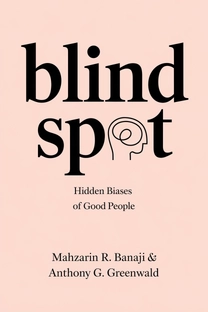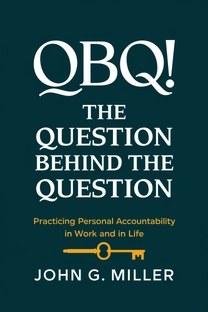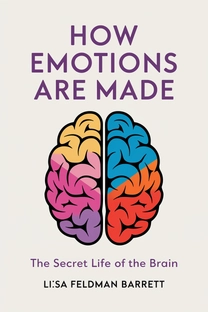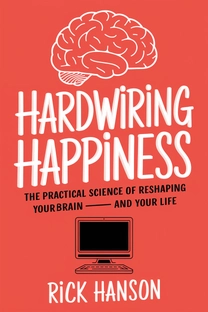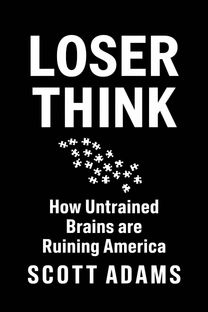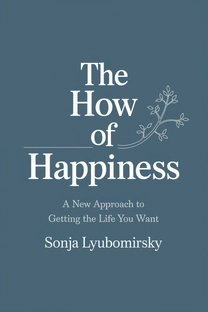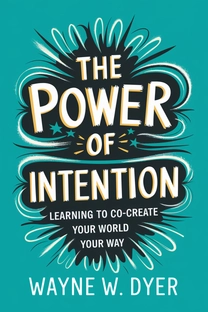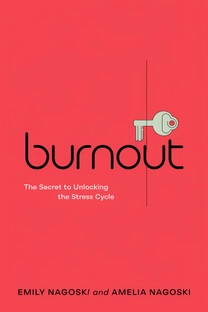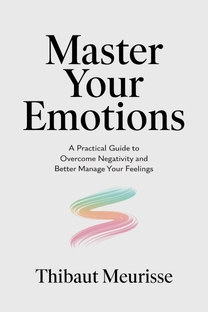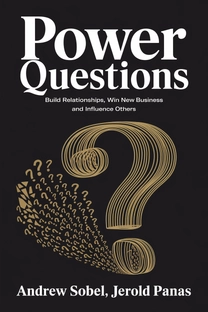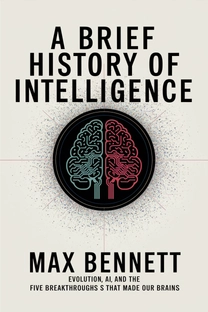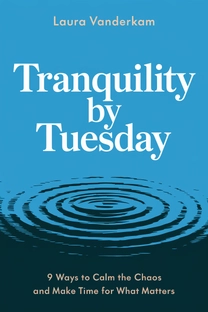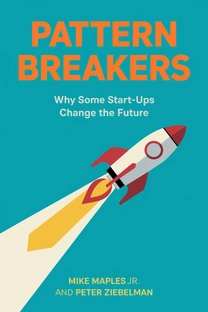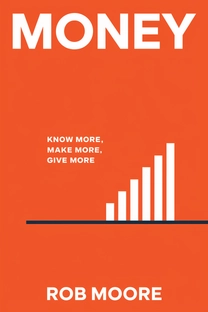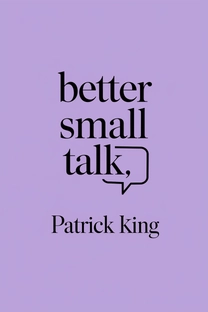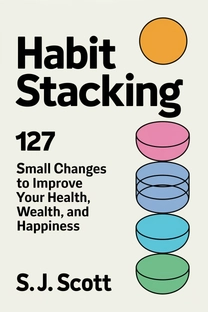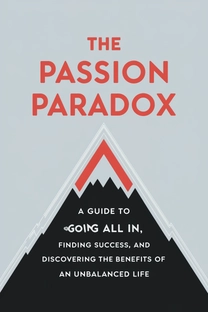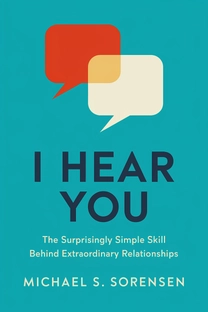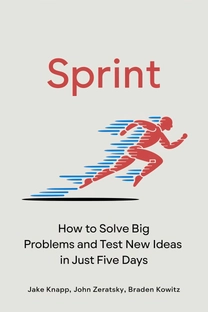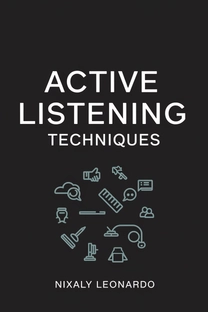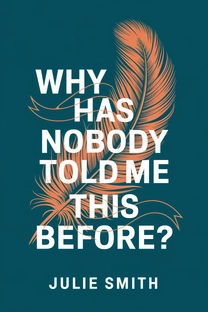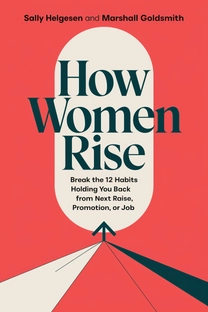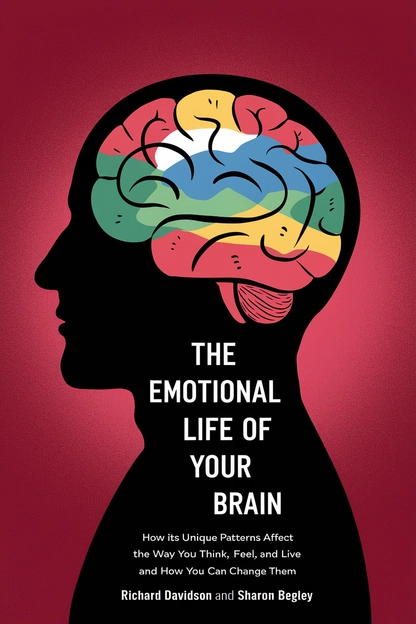
The Emotional Life of Your Brain
How Its Unique Patterns Affect the Way You Think, Feel, and Live — and How You Can Change Them
by Richard Davidson and Sharon Begley
Brief overview
This book illuminates how the brain’s unique wiring shapes our emotional responses, explaining why some people recover quickly from setbacks while others ruminate, and how we can actively transform negative mindsets. By combining neuroscience discoveries with practical tools, it shows that our emotional styles are malleable and that even small shifts in how we think and feel can dramatically improve our well-being.
Introduction
Have you ever wondered why certain people bounce back from tough times with ease, while others dwell on the negative? Or why some remain cheerful in the face of big life changes? These are not just personality quirks; they stem from patterns in the brain that shape how we feel, think, and live every day. In this introduction, we’ll begin our journey to understand the remarkable link between the brain and emotion. By exploring scientific findings and stories that reveal hidden aspects of our minds, we’ll uncover tools for self-discovery. You’ll see that we can influence our own emotional traits, rewire old habits, and cultivate healthier states of mind. This is possible because our brain is more flexible—and more powerful—than we ever imagined.
In the pages ahead, you’ll learn about the brain’s ability to adapt, known as neuroplasticity, and how it revolutionizes our understanding of emotional well-being. Let’s get started with the science behind emotions and discover how these insights can bring greater strength, harmony, and resilience to our lives.
The Brain and Our Emotions
For many years, scientists believed that emotion was driven solely by subcortical regions of the brain—subtle, hardwired structures controlling primal impulses like fear and desire. However, new research reveals that higher-level areas, like the prefrontal cortex, also help shape how we feel. This means emotion and cognition are deeply interwoven. Our highly evolved frontal regions allow us to interpret, regulate, and even plan our emotional reactions, rather than merely being swept along by them. For example, when you experience stress, your prefrontal cortex can either escalate anxiety or calm it by sending signals to dampen activity in fear-processing areas.
Emotional patterns are not random; they are connected to learned brain responses. If you’ve ever noticed you consistently respond to tension with an upset stomach or heart palpitations, that’s your brain’s blueprint for handling stress. But such blueprints are adjustable. As soon as scientists began studying the brain in real time with imaging tools, they found that the same regions that handle language, planning, or decision-making can also powerfully influence joy, worry, or empathy.
What is The Emotional Life of Your Brain about?
"The Emotional Life of Your Brain" by Richard Davidson and Sharon Begley takes readers on a compelling journey into the intricate connection between the brain's wiring and our emotional landscapes. Blending scientific discoveries with actionable insights, the book reveals how six dimensions of emotional style—like resilience and attention—govern how we respond to and interact with the world. By leveraging the concept of neuroplasticity, it presents an empowering narrative that we can actively reshape our emotional patterns in pursuit of a richer, happier life.
In its core, the book dismantles the belief that our emotions are fixed, highlighting that even small, consistent changes in our thought processes and habits can lead to profound transformations in our emotional lives. Through keen insights on mindfulness, self-awareness, and social intuition, Davidson and Begley provide readers with the tools to strengthen their resilience, improve their relationships, and foster lasting well-being. This book stands as a beacon for anyone seeking proactive ways to improve their emotional health in a world that's constantly challenging our emotional and social capacities.
Review of The Emotional Life of Your Brain
"The Emotional Life of Your Brain" shines in its ability to make cutting-edge neuroscience accessible and applicable to everyday life. One of its key strengths lies in unraveling the complex ways that brain circuits shape our emotions, providing a fresh lens to understand often-misunderstood feelings of anxiety, happiness, and empathy. The authors excel in weaving neuroscience with practical advice, offering tangible ways to develop skills like mindfulness and emotional regulation that are vital in cultivating resilience and a positive outlook.
Davidson's engaging and articulate writing style makes the scientific content approachable, avoiding overwhelming jargon without diluting the content's profundity. Readers will find themselves drawn to the clear explanations and real-world examples that validate the actionable insights provided. With its blend of narrative and instruction, the book is well-suited for individuals eager to better understand themselves and others through the prism of emotional style.
The narrative underscores the book's dual purpose: to educate and inspire change. Its broad appeal is evident, offering value to anyone from neuroscience enthusiasts to those navigating personal challenges. By centering the dialogue around the adaptability of emotional styles, the book resonates with readers seeking hope and guidance on their emotional journeys. I highly recommend "The Emotional Life of Your Brain" for its profound impact on the way we comprehend and enhance our emotional existence.
Who should read The Emotional Life of Your Brain?
- 1. **Neuroscience Enthusiasts**: Those fascinated by the workings of the brain and eager to explore how it dictates emotional patterns will find this book a treasure trove of insights.
- 2. **Personal Development Seekers**: Individuals aiming to improve their emotional intelligence and resilience can benefit from the book's practical strategies for emotional transformation.
- 3. **Mental Health Professionals**: Psychiatrists, therapists, and counselors may find valuable theories and methods to enrich their understanding of emotional styles and brain plasticity.
- 4. **Mindfulness Practitioners**: Readers familiar with or interested in meditation and mindfulness techniques will appreciate the book's focus on these practices as tools for emotional modulation.
- 5. **Curious Readers**: Those open to discovering how everyday emotional reactions can be reshaped to improve personal and social well-being will be drawn to the book's scientific yet relatable approach.
About the author
Book summaries like The Emotional Life of Your Brain
Why readers love Mindleap
10-Minute Book Insights
Get the core ideas from the world's best books in just 10 minutes of reading or listening.
Curated For You
Discover your next favorite book with personalized recommendations based on your interests.
AI Book ExpertNew
Chat with our AI to help find the best book for you and your goals.
Reviews of MindLeap
Love how I can get the key ideas from books in just 15 minutes! Perfect for my busy schedule and helps me decide which books to read in full.
Alex R.
The summaries are incredibly well-written and the audio feature is perfect for my commute. Such a time-saver!
Jessica M.
Great app for personal growth. The insights are clear and actionable, and I love how they capture the essence of each book.
Chris P.
The app is beautifully designed and the summaries are top-notch. Definitely worth every penny!
Sarah K.





